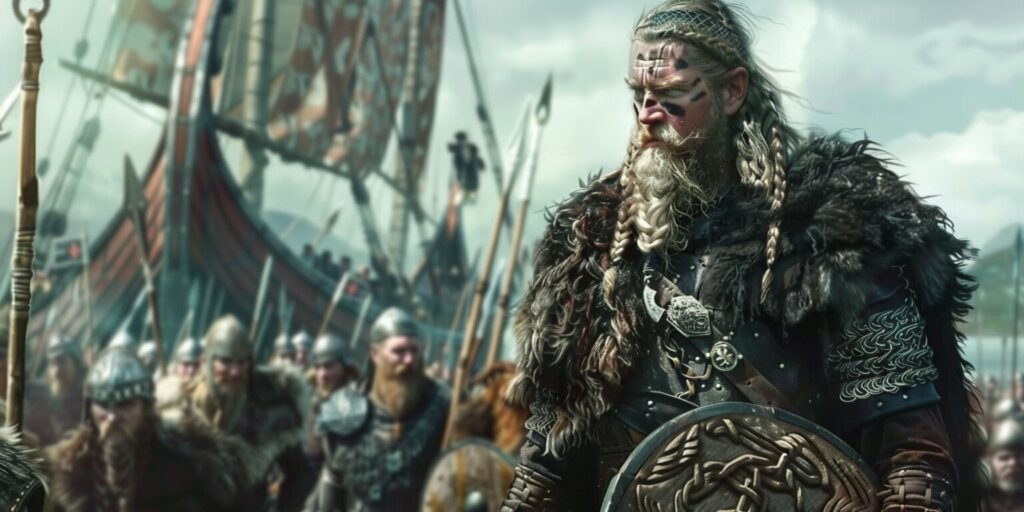Tales of the Gods, Vikings
Legends of the North: The Most Famous Vikings in History
Welcome to a journey into the remarkable lives of the most renowned Vikings in history. These ancient Norse figures were fearless warriors and influential leaders who left an indelible mark on the world. Join us as we delve into their captivating stories and uncover the fascinating legacy they’ve left behind.
The Legendary Ragnar Lothbrok
Delve into the captivating tale of Ragnar Lothbrok, a legendary Viking hero who has captivated the imaginations of many. Known as the most famous Viking who ever lived, Ragnar Lothbrok is considered one of the most iconic and influential historic Viking figures in Norse history.
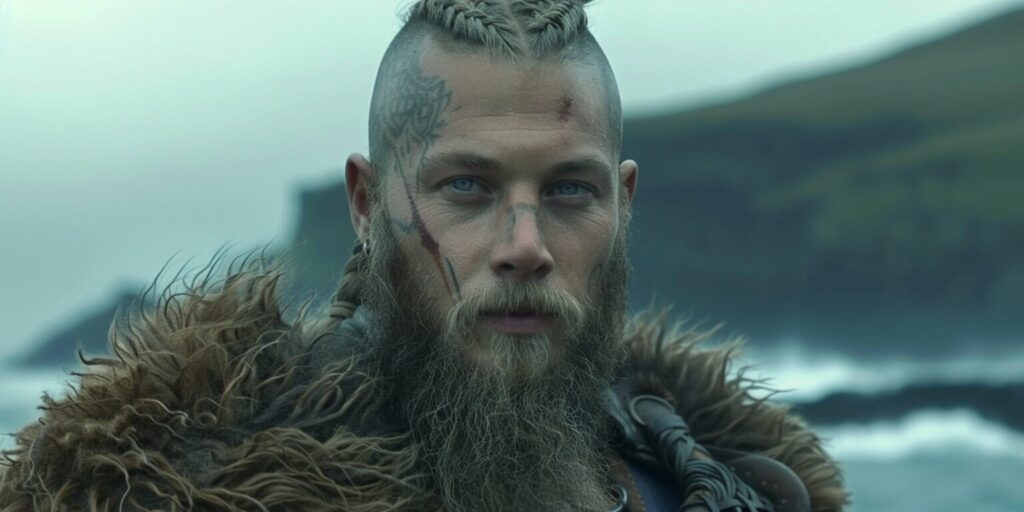
Rise to Fame
Ragnar Lothbrok’s rise to fame can be attributed to his extraordinary exploits as a warrior and leader. He led daring raids and sea voyages, amassing great wealth and earning the respect of his fellow Vikings. His legendary adventures spread far and wide, solidifying his status as a Norse hero.
Notable Exploits
- Ragnar Lothbrok is famous for his audacious raid on the Kingdom of Northumbria in England, where he plundered its riches and showcased his strategic brilliance.
- He also led successful invasions of the Kingdom of Wessex, which resulted in significant territorial gains for the Vikings.
- Ragnar’s most renowned exploit was his legendary voyage to the Mediterranean, where he pillaged cities and left a lasting impression on the European continent.
Legacy and Influence
Ragnar Lothbrok’s legacy extends far beyond his military achievements. His character has been immortalized in sagas, poems, and popular culture, further establishing him as a cultural icon. His daring spirit, incomparable leadership, and unyielding determination continue to inspire people around the world, making him an enduring symbol of Viking prowess.
Powerful Chieftains: Erik the Red and Leif Erikson
Embark on an extraordinary journey into the lives of two renowned Norse explorers and leaders: Erik the Red and his son Leif Erikson. Known as powerful chieftains and the most famous Vikings in history, these fearless Vikings made significant contributions to Viking history through their exploration and settlement activities.
The Adventurous Spirit of Erik the Red
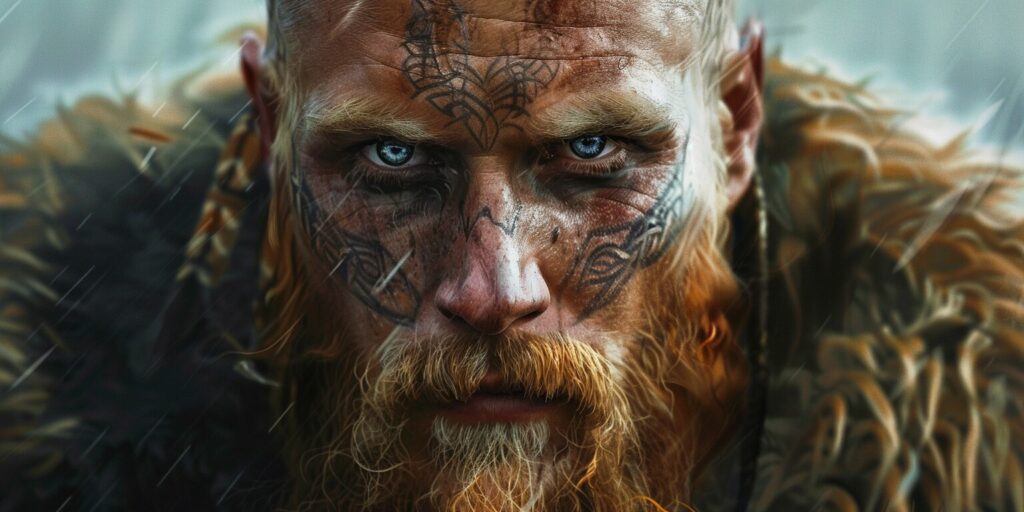
Erik the Red, often referred to as the “founder of the first Norse settlements in Greenland,” was an intrepid explorer and leader. Born in the late 10th century, he possessed an unwavering spirit of adventure and a desire to discover new lands.
- Erik the Red is credited with establishing the first successful Viking settlement in Greenland. He named it “Greenland” to attract settlers and emphasize its fertility.
- His exploration of Greenland paved the way for future Viking expeditions, including those led by his son, Leif Erikson.
- Erik the Red’s leadership and resilience in the face of challenging conditions contributed to the sustained settlement of Greenland by the Norse.
The Legacy of Leif Erikson
Leif Erikson, the son of Erik the Red, continued his father’s legacy by leading notable expeditions and playing a crucial role in Norse exploration.
- Leif Erikson is widely regarded as one of the first Europeans to set foot in North America. He reached the continent around 1000 AD, nearly 500 years before Christopher Columbus.
- His exploration voyages extended to areas such as present-day Newfoundland, Labrador, and possibly as far south as the northeastern United States.
- Leif Erikson’s adventurous spirit and navigational skills inspired future generations of Viking explorers, leaving an indelible mark on Viking history.
Erik the Red and Leif Erikson epitomize Viking leaders’ daring and enterprising nature. Their exploration efforts and contributions to Norse settlement in Greenland and North America solidify their status as famous Viking leaders and notable explorers.
Famous Female Vikings: Lagertha and Freydis Eiriksdottir
Images of fierce and skilled warriors often come to mind when we think of the Viking Age. While Viking warriors were predominantly men, exceptional women also left a lasting impact on Viking society. Two of the most famous Viking warriors were Lagertha and Freydis Eiriksdottir.
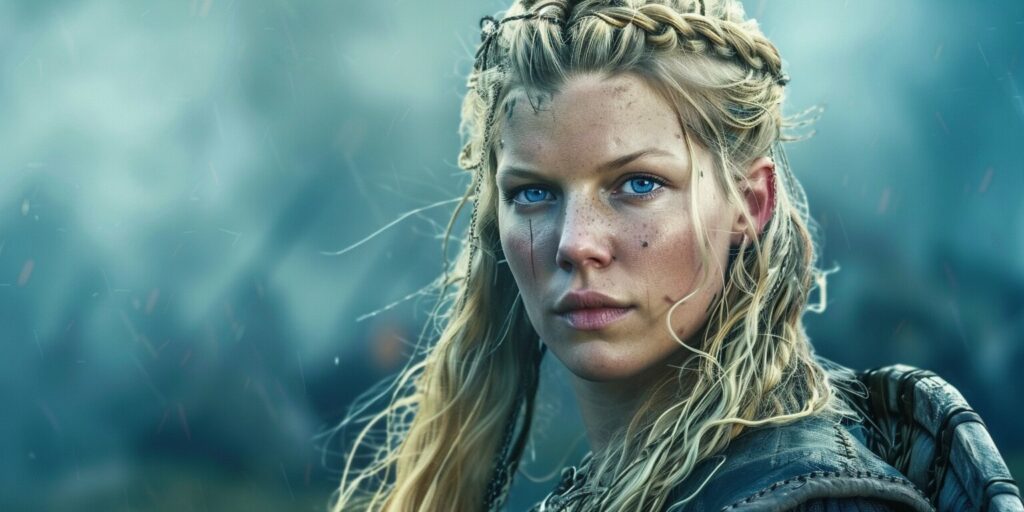
Lagertha: A Skilled Warrior and Respected Ruler
Lagertha was not only a skilled warrior but also a respected ruler. She fought alongside her husband, Ragnar Lothbrok, in numerous battles, proving herself to be a formidable force on the battlefield. Lagertha’s ferocity and strategic brilliance made her one of the most feared and respected Viking warriors of her time.
After the demise of her husband, Lagertha took command and became the ruler of her lands, displaying her leadership skills and ability to govern with strength and fairness. Her contributions to Viking society as a warrior and ruler continue to inspire admiration and awe.
Freydis Eiriksdottir: A Fierce and Brave Viking Woman
Freydis Eiriksdottir was another remarkable Viking woman known for her courage and bravery. She was the daughter of the famous Norse explorer, Erik the Red, and inherited her father’s adventurous spirit.
Freydis accompanied her brother, Leif Erikson, on his voyage to Vinland, marking her as one of the first European women to set foot on North American soil. She fearlessly defended the Viking settlement against attacks, displaying her valor and resilience.
While Lagertha and Freydis Eiriksdottir may have lived centuries apart, they shared a common legacy of breaking societal norms and proving that Viking women could be just as skilled and influential as their male counterparts.
The Raider and Ruler: Harald Hardrada
Harald Hardrada, also known as Harald Sigurdsson, was a famous Viking leader whose military campaigns and claim to the Norwegian throne left an indelible mark on the Viking Age in Europe. Born in 1015, Harald grew up amidst the violent and brutal world of Viking raids, where he honed his skills as a warrior and leader.
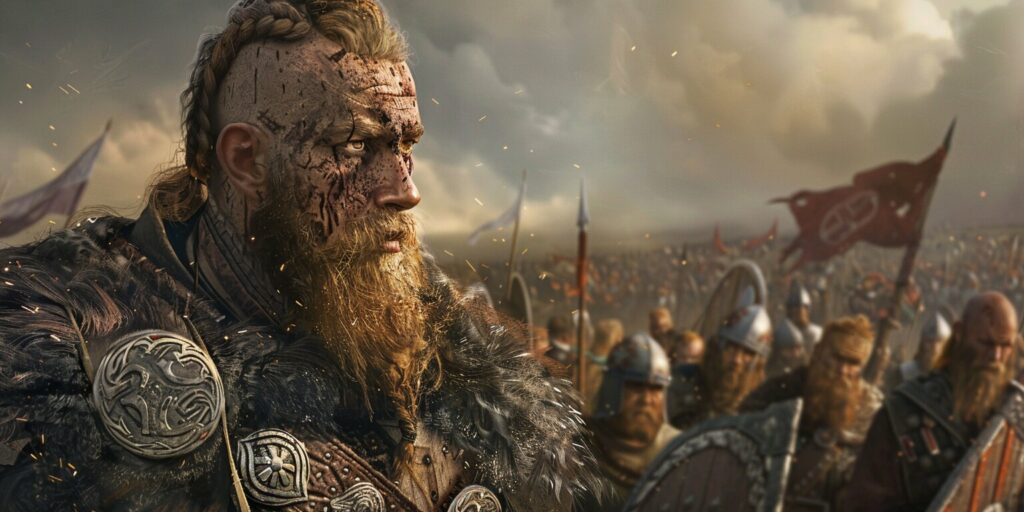
Harald embarked on numerous ambitious military expeditions throughout his life, earning a reputation as a fearsome raider. His Viking raids spanned across Europe, from the British Isles to the Byzantine Empire, where his warships struck fear in the hearts of his enemies. With his formidable army, Harald aimed to expand his influence and amass wealth through conquest.
However, Harald’s ambitions went beyond mere raids. He aspired to rule over Norway, a position that rival factions had long contested. In 1045, after years of exile and battles, Harald finally achieved his goal and ascended to the throne of Norway. As King, he sought to establish a unified and powerful kingdom, guiding his people through a period of consolidation and development.
Harald’s rule was characterized by his iron-fisted nature, strict laws, and a commitment to maintaining stability within his realm. He implemented reforms and conducted extensive military campaigns at home and abroad to protect his kingdom from external threats and assert his authority over neighboring territories.
Despite his accomplishments, Harald’s ambitions ultimately led to his downfall. In 1066, he set his sights on England, claiming the throne as his own. However, his invasion was met with fierce resistance from English forces led by Harold Godwinson. The Battle of Stamford Bridge proved to be Harald’s undoing, as he fell in combat, putting an end to his dreams of conquest.
The legacy of Harald Hardrada lives on in history as that of a daring and ambitious Viking warrior. His military campaigns and rule shaped the Viking Age and left a lasting impact on the development of Europe. Today, his name is synonymous with Viking raids and the pursuit of power, cementing his status as one of the most famous Viking leaders in history.
Norse Mythology: Thor and Odin
Immerse yourself in the captivating world of Norse mythology and explore the incredible tales of two legendary figures – Thor, the mighty god of thunder, and Odin, the revered Allfather. With their immense power and mythical prowess, Thor and Odin earned their place as famous Norse warriors and legendary Scandinavian seafarers.
Thor, with his iconic hammer Mjölnir, symbolized strength, courage, and protection. He was known for his battles against giants and fierce monsters, defending both the gods and humans from any threat. Thor’s thunderous strikes resonated throughout Viking culture, making him an enduring symbol of bravery and heroism.
Odin, Asgard’s supreme god and ruler, personified wisdom, knowledge, and war. His relentless pursuit of knowledge led him to sacrifice an eye in exchange for profound wisdom. Odin’s boundless wisdom guided the gods and fueled the Viking seafarers’ ambitions, inspiring them to explore new lands and conquer the unknown seas.
These mythical figures played a vital role in shaping Viking culture and belief systems. The tales of their extraordinary adventures entertained and provided moral lessons and a sense of identity for the Norse people. Their stories were passed down through generations, embedding themselves deeply within the fabric of Viking society.
The Influence of Thor and Odin:
- Thor: As a famous Norse warrior, Thor’s legends and heroic deeds inspired Viking warriors, instilling them with courage and determination on the battlefield.
- Odin: As the Allfather, Odin’s prominence as a legendary seafarer fueled the Norsemen’s maritime ambitions, leading them to explore distant lands and establish trade routes that stretched across vast oceans.
- Together, Thor and Odin represented the dual qualities valued by the Vikings – physical strength and strategic wisdom.
Through their mythical tales, Thor and Odin continue to captivate our imaginations and serve as enduring symbols of the famous Norse warriors and legendary Scandinavian seafarers who left an indelible mark on history.
Skilled Shipbuilders: Rollo and Hastein
Embark on a journey into the world of Viking shipbuilding, where innovation and strategic prowess converge. Rollo and Hastein were fierce Viking warriors and master shipbuilders, contributing significantly to Viking warfare and the development of Viking longships.
As historic Viking figures, Rollo and Hastein showcased their skills in naval expeditions, utilizing their expertly crafted vessels to navigate the treacherous waters. These skilled shipbuilders understood the importance of sturdy and agile ships for successful raiding and conquest.
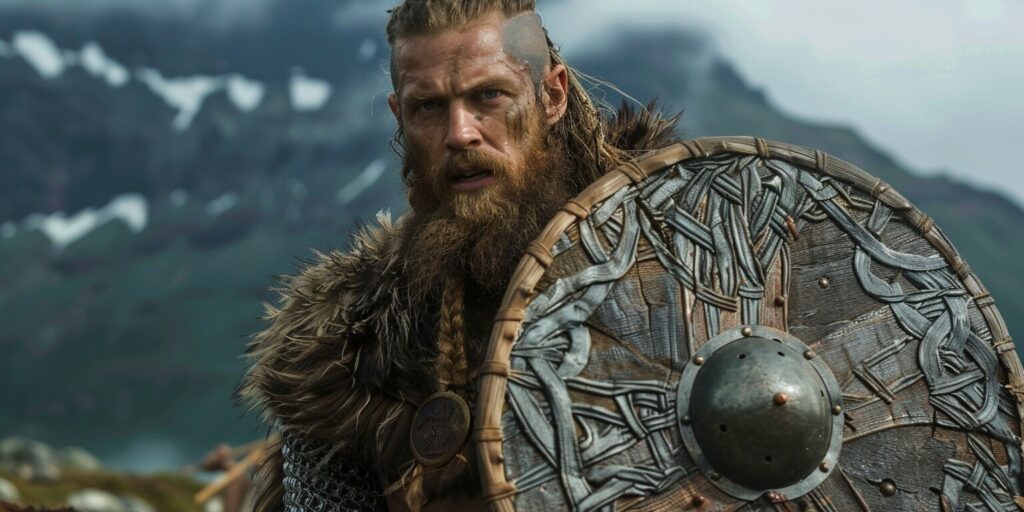
One of the notable accomplishments of Rollo and Hastein was their introduction of innovative shipbuilding techniques that revolutionized Viking naval warfare. They recognized the need for swift ships capable of withstanding the punishing rigors of the sea.
Contributions to Viking Warfare
- Their expertly crafted longships propelled Viking warriors swiftly across vast distances, allowing them to surprise their enemies and conduct lightning-fast raids.
- The ships built by Rollo and Hastein featured a shallow draft, which enabled Vikings to navigate shallow rivers and estuaries, giving them a tactical advantage in their expeditions.
- These shipbuilders also implemented a clinker-built construction technique, using overlapping planks to create robust vessels. This technique provided additional strength to withstand the harsh elements and rough seas.
- Their contributions to Viking warfare extended beyond shipbuilding. Rollo and Hastein served as commanders, leading successful naval expeditions and establishing a reputation as formidable Viking warriors.
Rollo and Hastein left an indelible mark on Viking history through their combined mastery of shipbuilding and strategic naval expeditions. Their innovative techniques and extraordinary skills laid the foundation for the fearsome Viking fleets that dominated the seas during the Viking Age.
The Legendary Shieldmaiden: Lagertha
Dive deeper into the life of Lagertha, a formidable shieldmaiden and revered leader. Known for her bravery and exceptional skills on the battlefield, Lagertha is one of the most famous Viking leaders in history.
As a symbol of female empowerment in Viking society, Lagertha broke societal norms and challenged gender roles. She fought alongside men in battle and commanded her own troops, earning the respect and admiration of her warriors.
Lagertha’s notable exploits as a leader extend beyond warfare. She was also a notable explorer, venturing on daring expeditions to uncharted territories. Her courageous voyages and discoveries made her one of the notable Viking explorers of her time.
Rise to Power
Lagertha’s rise to power began with her marriage to the legendary Viking chieftain Ragnar Lothbrok. Together, they formed a formidable partnership and built a legacy that resonates to this day.
After Ragnar’s death, Lagertha continued his legacy and ruled as the Queen of Kattegat. Her reign was marked by prosperity and stability, and she led her people with wisdom and strength.
A Lasting Legacy
Lagertha’s impact on Viking society transcended her lifetime. Her story inspired countless generations, and her name became synonymous with courage and resilience.
Today, Lagertha remains iconic in popular culture, portrayed in books, television shows, and movies. Her legendary status continues to captivate audiences and serve as a testament to the strength of Viking women.
Notable Viking Artisans: Othere and Faravid
Step into the world of Viking artistry and explore the incredible talent of Othere and Faravid, two historic Viking figures who left a lasting impact on the realm of craftsmanship.
Othere, known for his exceptional skill as a metalworker, created intricate pieces adorned with intricate designs, showcasing his mastery of the craft. His works, such as ornate jewelry and beautifully crafted weapons, exemplify the fine craftsmanship that was synonymous with the Vikings.
Faravid, on the other hand, was a renowned woodworker, celebrated for his ability to transform rough timber into stunning works of art. Whether it was intricate woodcarvings adorning longships or finely crafted furniture, Faravid’s attention to detail and craftsmanship were unmatched.
Both Othere and Faravid were influential Viking chieftains in their own right, revered for their artistic contributions that elevated Viking culture and showcased the immense talent within their society.
Notable Contributions
- Othere’s metalwork became highly sought after, as his creations showcased the finesse and craftsmanship of the Viking artistry.
- Faravid’s woodwork adorned Viking longships, homes, and ceremonial halls, elevating the visual appeal of the Norse communities.
- Their work influenced subsequent generations of Viking artisans, setting new standards for quality and innovation.
- The enduring legacies of Othere and Faravid can be seen in the exquisite examples of Viking art that have survived to this day, serving as testaments to their skill and ingenuity.
Embrace the rich artistic heritage of the Vikings through the remarkable contributions of Othere and Faravid. Their talent and dedication continue to inspire and captivate generations, making them true icons in the world of Viking artistry.
Conclusion
These names of famous Vikings have left an indelible mark on history. From fearless warriors to influential leaders, these Norse figures have captivated our imaginations and inspired countless tales of their bravery and conquests.
Vikings like Ragnar Lothbrok, Erik the Red, and Leif Erikson expanded the known world through their expeditions and settlements, venturing far and wide to seek new lands. Their bold exploration laid the foundation for future discoveries and shaped the course of history.
Not only did these most famous Vikings in history leave a lasting impact on the world through their conquests and exploration, but they also influenced Norse culture and belief systems. Figures like Lagertha and Freydis Eiriksdottir shattered societal norms, proving that women were just as capable and formidable as their male counterparts.
The Viking Age was a time of triumphs, conflicts, and remarkable achievements. As we delve into the lives of these famous Vikings, we are reminded of their enduring legacy and the richness of the cultural heritage they left behind.

